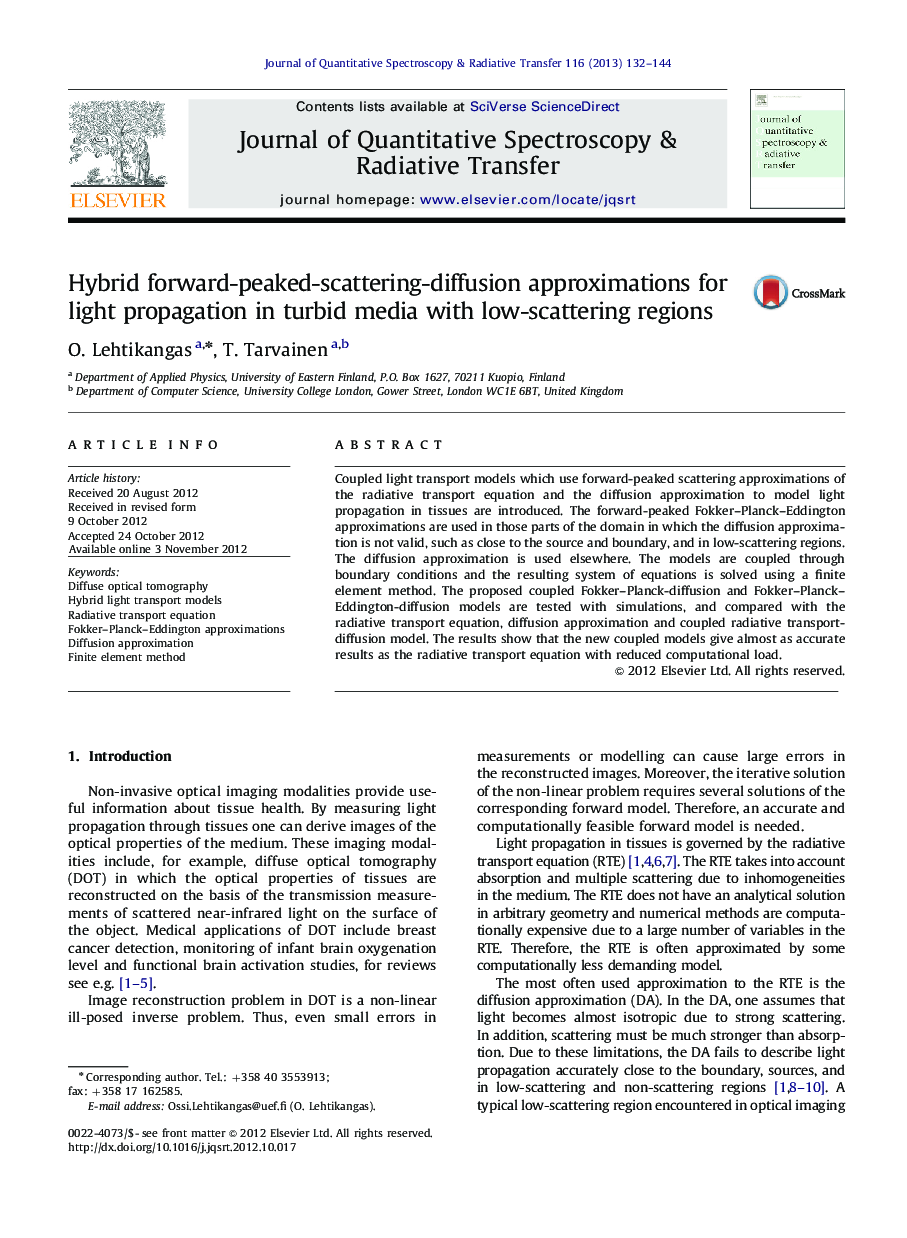| Article ID | Journal | Published Year | Pages | File Type |
|---|---|---|---|---|
| 5428912 | Journal of Quantitative Spectroscopy and Radiative Transfer | 2013 | 13 Pages |
Coupled light transport models which use forward-peaked scattering approximations of the radiative transport equation and the diffusion approximation to model light propagation in tissues are introduced. The forward-peaked Fokker-Planck-Eddington approximations are used in those parts of the domain in which the diffusion approximation is not valid, such as close to the source and boundary, and in low-scattering regions. The diffusion approximation is used elsewhere. The models are coupled through boundary conditions and the resulting system of equations is solved using a finite element method. The proposed coupled Fokker-Planck-diffusion and Fokker-Planck-Eddington-diffusion models are tested with simulations, and compared with the radiative transport equation, diffusion approximation and coupled radiative transport-diffusion model. The results show that the new coupled models give almost as accurate results as the radiative transport equation with reduced computational load.
⺠Light propagation in turbid media with low-scattering regions is studied. ⺠Hybrid light transport models incorporating forward-peaked scattering are introduced. ⺠Hybrid models utilize Fokker-Planck-Eddington and diffusion approximations. ⺠The coupled models have good accuracy and reduced computational load.
